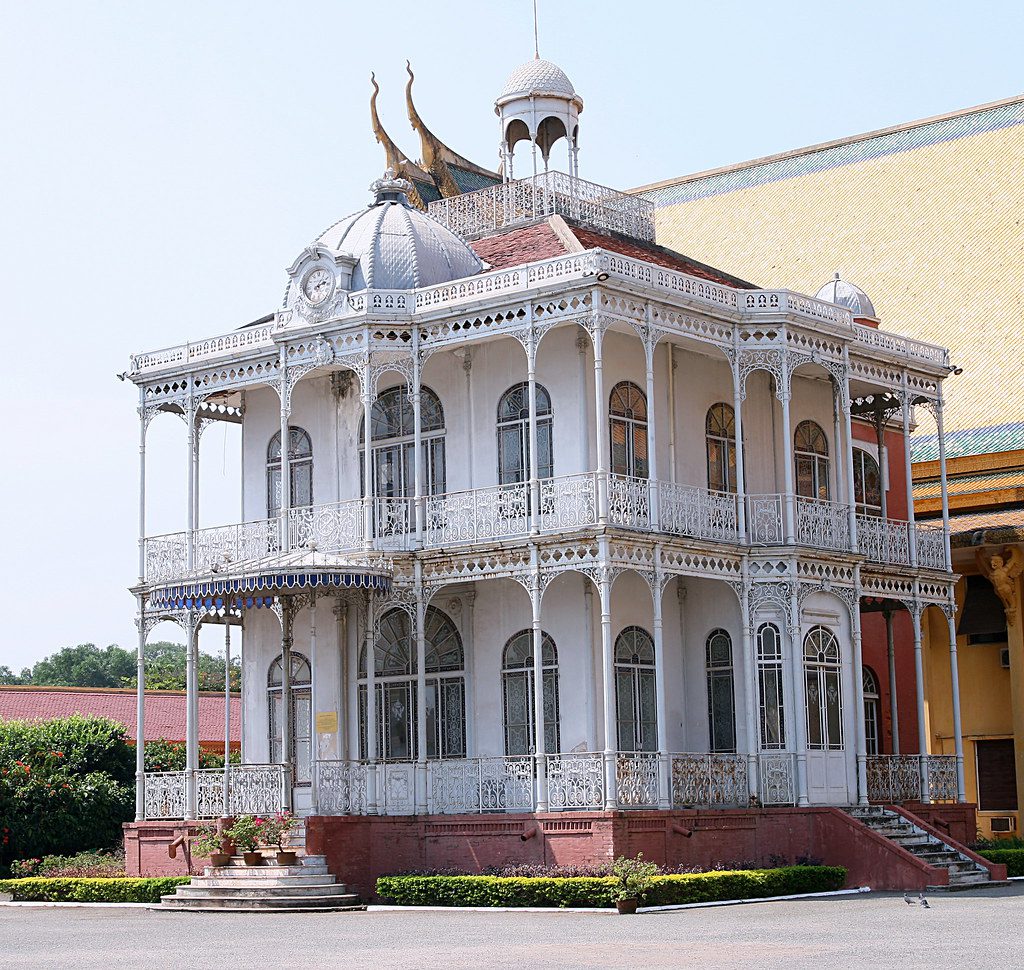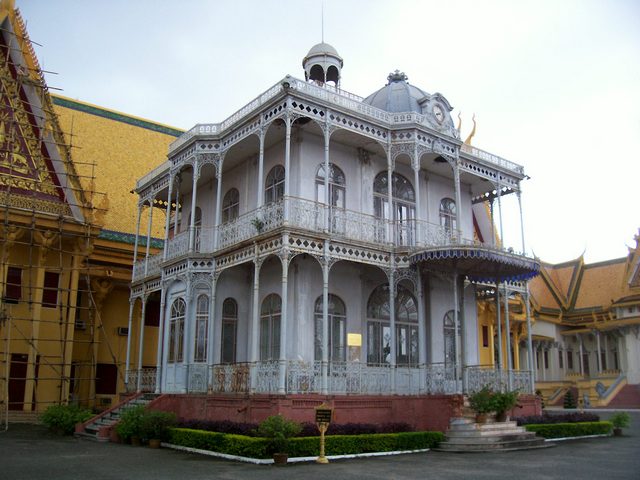Napoleon Pavilion -I think this was part of LIFE magazine’s coverage of Cambodian independence, 1953.

Very, very little is known for sure about the history of this building. The story everyone knows is that it was used by the Empress Eugenie (wife of the Emperor Napoleon III) during the opening of the Suez Canal (November 1869).Maybe, but it’s hard to see how. In July 1870 Napoleon was preparing for war with Germany, and it’s unlikely he had time for making gifts to kings on the other side of the world. The war began in August, and on 2 September he lost the Battle of Sedan, was captured, a deposed, and sent into exile in England. So the window in which he might have made the gift is 8 to 9 months – just possible, but very narrow.
The alternative story is that the gift was made by the Third Republic, which followed the overthrow of Napoleon. This version at least allows more time, but like the first, it suffers one serious obstacle: no solid evidence. If the Republic, or the Emperor, made this gift, there would be a piece of paper recording the fact somewhere in the French archives, and it has never been produced. (To be fair, I’m not sure anyone has looked).
It’s uncertain when it arrived in Phnom Penh. The very first mention is by a visitor named J.M. Vidal (I don’t know what the initials stand for), who says that on a visit in 1879 he and his companion “arrived at the iron house and were soon introduced [to Norodom] in the little salon.” Note that Suez was opened in 1869: if this was a gift from Napoleon, it took its time arriving. Anyway, the first certain record of its presence is 1879.
Nguon Chhay Kri, a Cambodian statesman of the time of Sihanouk, has written that it arrived in 1876, but it is absent from Ferdinand Hanusse’s April 1876 chart of Phnom Penh, suggesting that that it made its appearance after that date. So if we accept Nguon Chhay Kri’s testimony, the pavilion arrived between April 1876 and some point in 1879. Was it really a gift at all?
Brau de St-Pol Lias, visiting Phnom Penh in February 1885, describes an iron pavilion “which figured at the Exposition of 1878 …” It seems certain that he’s talking about the Napoleon Pavilion, but he links it to the Paris Exposition Universelle, held from 1 May to 10 November 1878. That date would tie in neatly with Vidal’s visit in 1879, but would seem to require a purchase rather than a gift. Brau was accompanied on his tour of the palace by Father Marie-Joseph Guesdon, who had been resident in Phnom Penh several years and would have known the story of its buildings, but Brau doesn’t identify Guesdon as his source.

When did it come to be called the Napoleon Pavilion? Neither Lias nor Vidal call it that – their term is Iron House, and I believe this is the common name for it until the last decade of the century. Paul Collard calls it the Napoleon Pavilion in his Cambodge et les Cambodgiennes, written 1924 and published 1925. Collard began his career in Cambodia in the mid-1880s, about the same time Lias was there, and eventually became mayor of Phnom Penh. So I’m not sure when it stopped being the Iron House and became the Napoleon Pavilion.
The strongest reason for connecting it to Napoleon is the monogram capital N that decorates it. N for Napoleon, N for Norodom. Yes, but the letter N also decorated the villa called the Phimean Akas, built in the late 1860s as Norodom’s private residence, and the dance hall – in short, Norodom was putting his initial on everything (not, however, on the main gate of the palace, which was a curious change). So I’d have to say that the capital N is not diagnostic of Napoleonic origin.
What can we say for sure? Very little. It’s European, it’s dismountable and transportable, and it appears in the palace in the late 1870s. That’s about all. If anyone wants to investigate further, I’d suggest starting with the records of the Paris Exhibition of 1878. Philip Coggan


